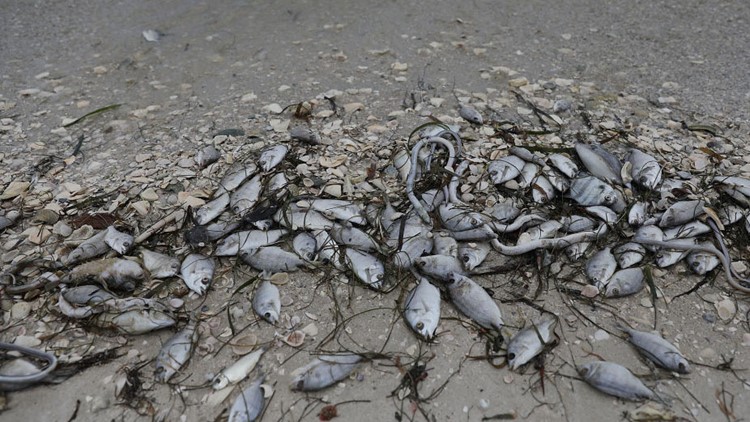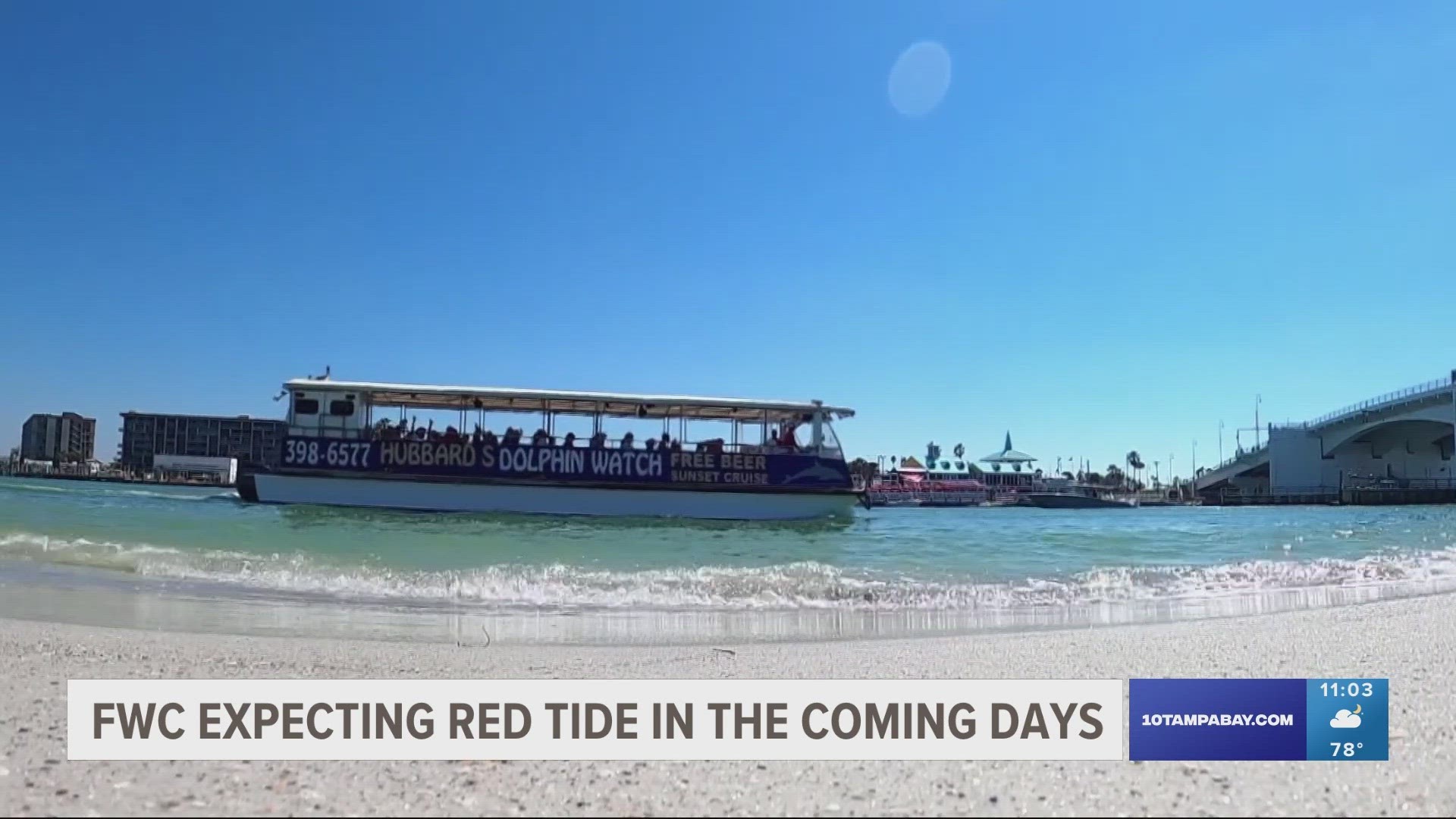While red tide is nothing new, we haven’t seen mammals dying at this rate in years. Fish kills are a normal causality.
Florida Wildlife Commission reports 80 tons of fish have been removed from beaches from Sarasota up to Holmes Beach. More than 250 sea turtles have been found stranded or dead because of red tide, and at least 80 manatee deaths are blamed on red tide.
Mote Marine Laboratory says they get about 15 dead dolphins a year, so to find six in less than 24 hours is alarming.
Many of our viewers are asking: What makes this year’s ride tide so extreme? We took that question to Dr. Brian LaPointe, a harmful algal bloom expert. He’s also a research professor at Florida Atlantic University.
“If you go back in time you will see a strong connection between nutrient pollution runoff and red tide. For example, 1947 was a year of extreme rains. A massive hurricane that year caused deadly flooding,” LaPointe said.
He said Florida experienced an extreme red tide immediately after.
“Once the rain hits the land, it causes runoff eventually hitting the coastal oceans. Those nutrients, with the heat, cause the bloom."
Factors include rain, nutrient pollution and heat. It’s something scientists call HABs, which stands for "harmful algal blooms."
LaPointe says our recent red tide bloom was likely caused by Hurricane Irma along with excessive rain in Florida during the last two weeks of May.
The last big red tide we saw was in 2005, the same year as Hurricane Katrina. It was also a year after we had hurricanes Charley, Frances and Jeanne.
Once the bloom is out, there’s not much anyone can do to save the animals, apart from getting them out of the area before red tide hits. It's a nearly impossible task, which is why there aren’t any efforts underway to do that.
The Florida Wildlife Commission will be testing to see if the dolphins found this week were poisoned by red tide. Results are expected to come back in several weeks.
►Make it easy to keep up-to-date with more stories like this. Download the 10 News app now.
Have a news tip? Email tips@wtsp.com, visit our Facebook page or Twitter feed.



